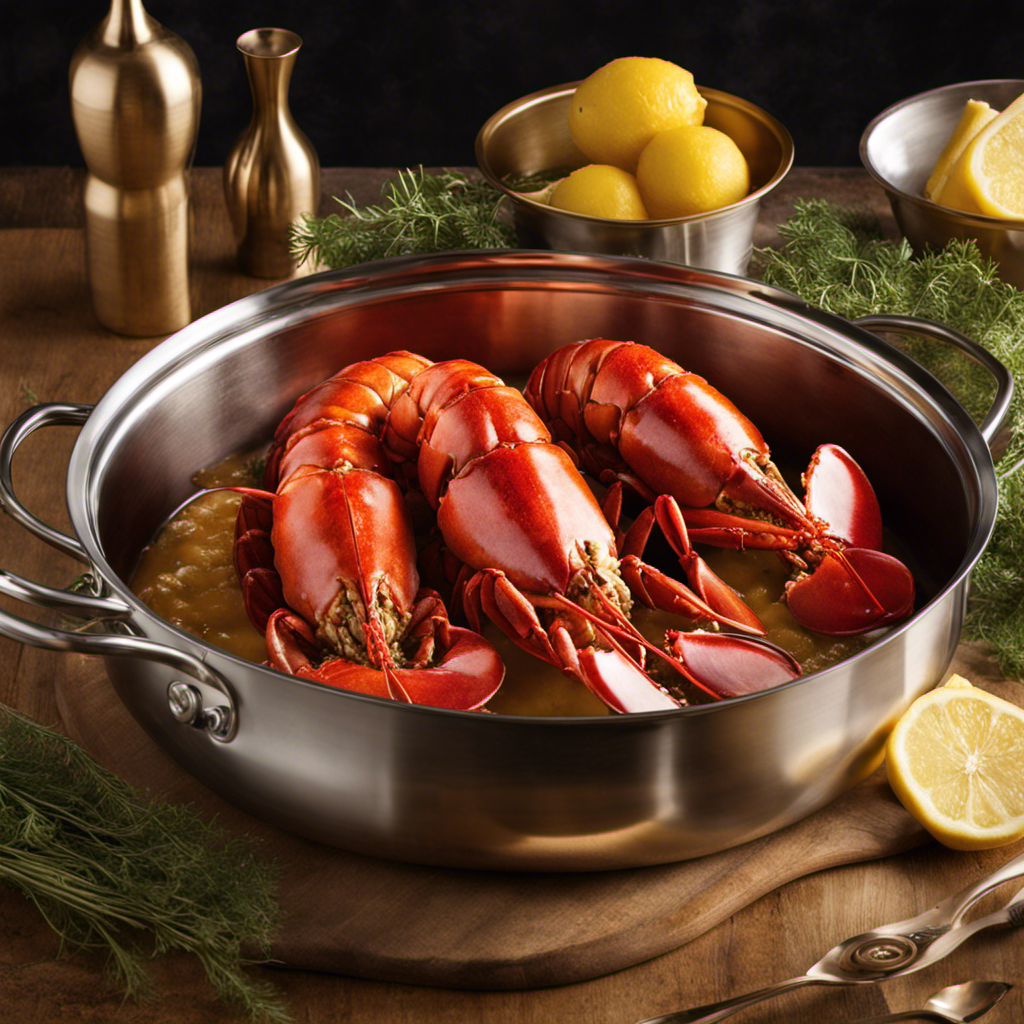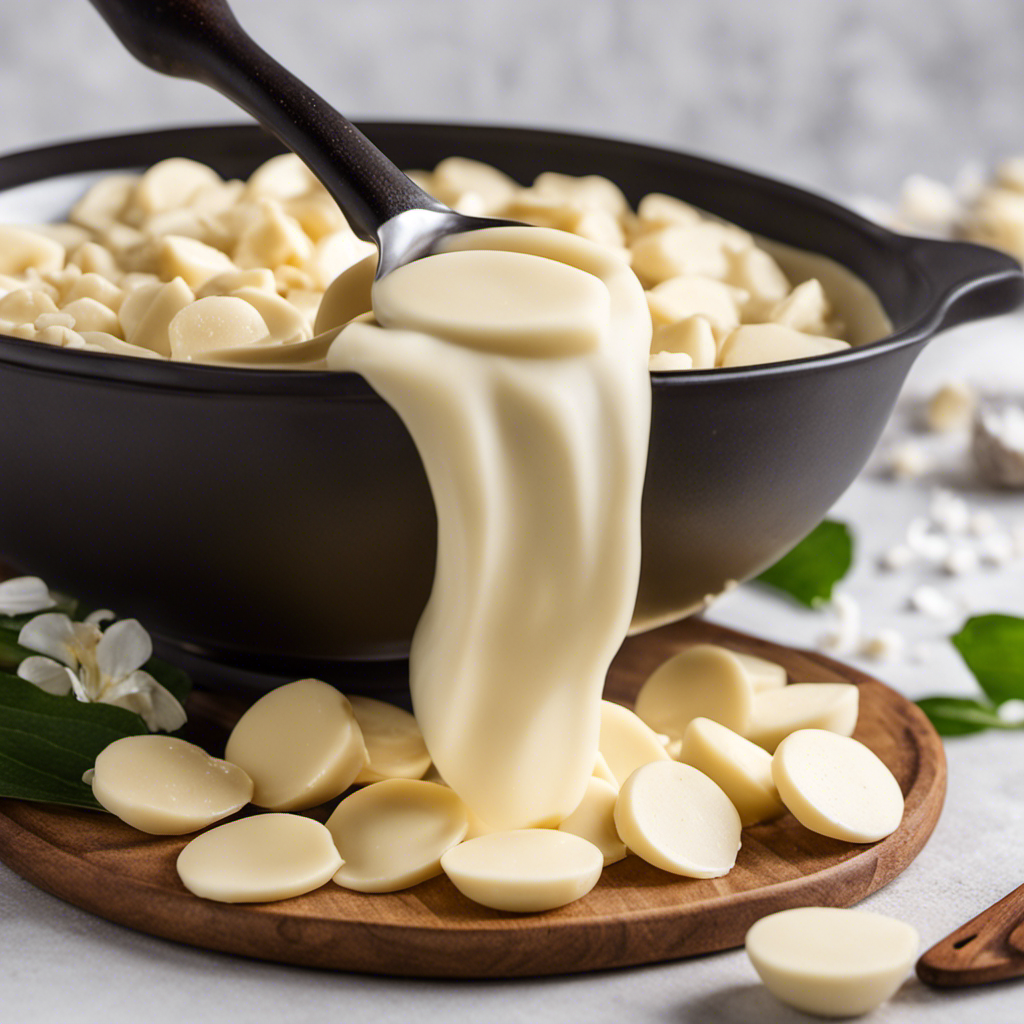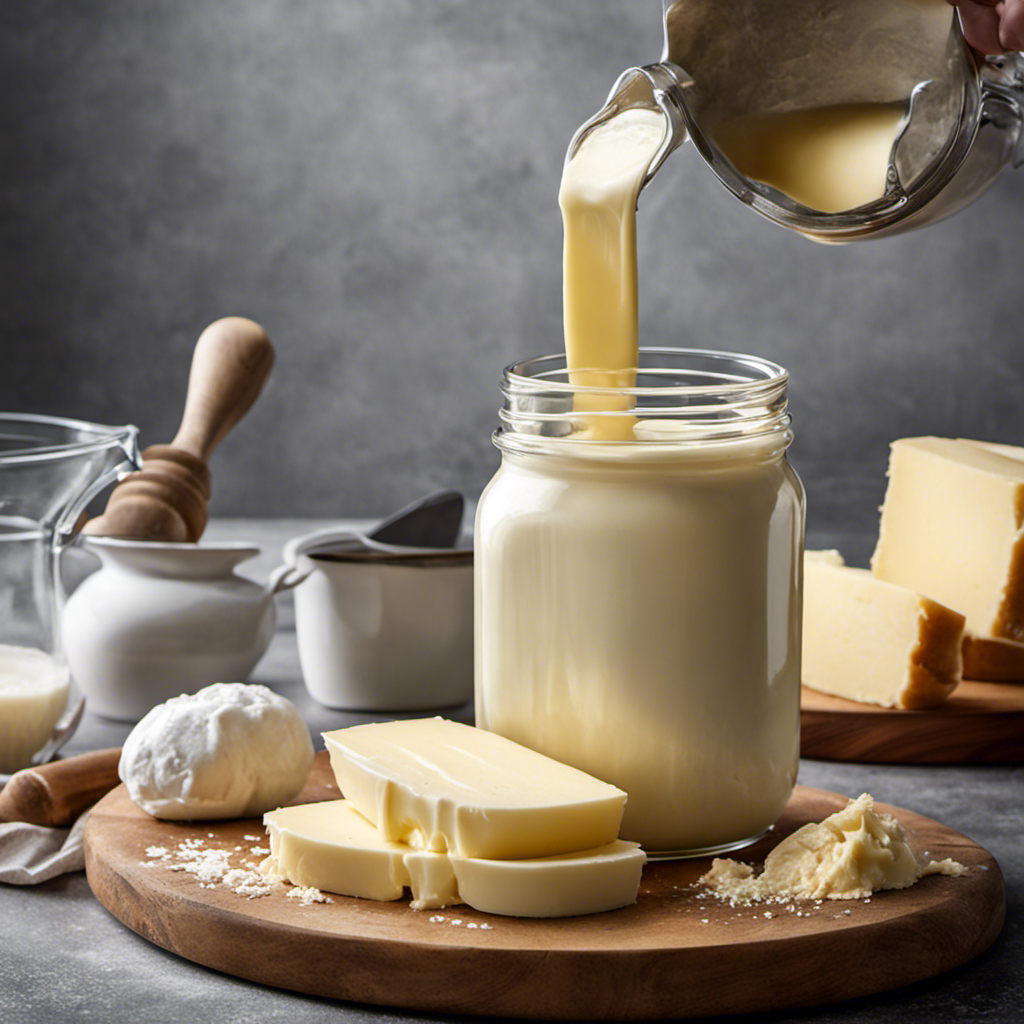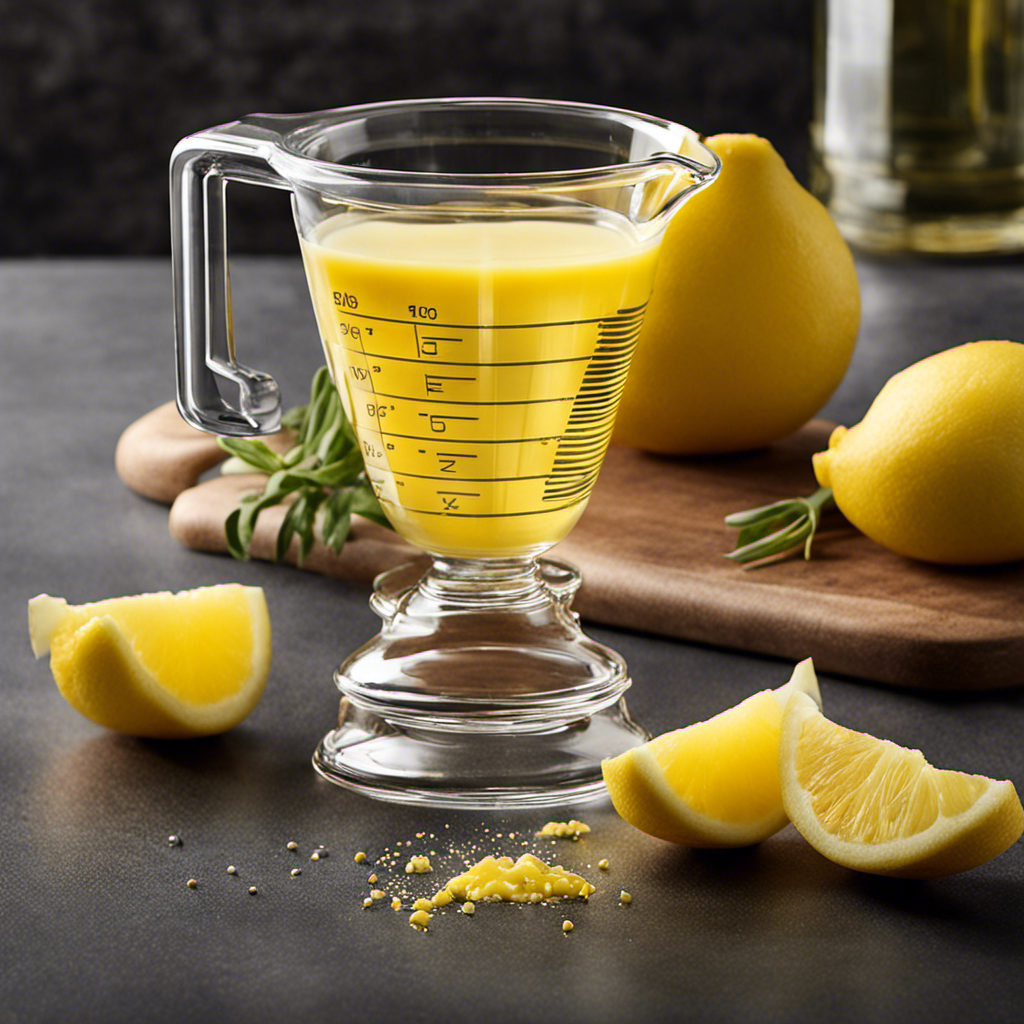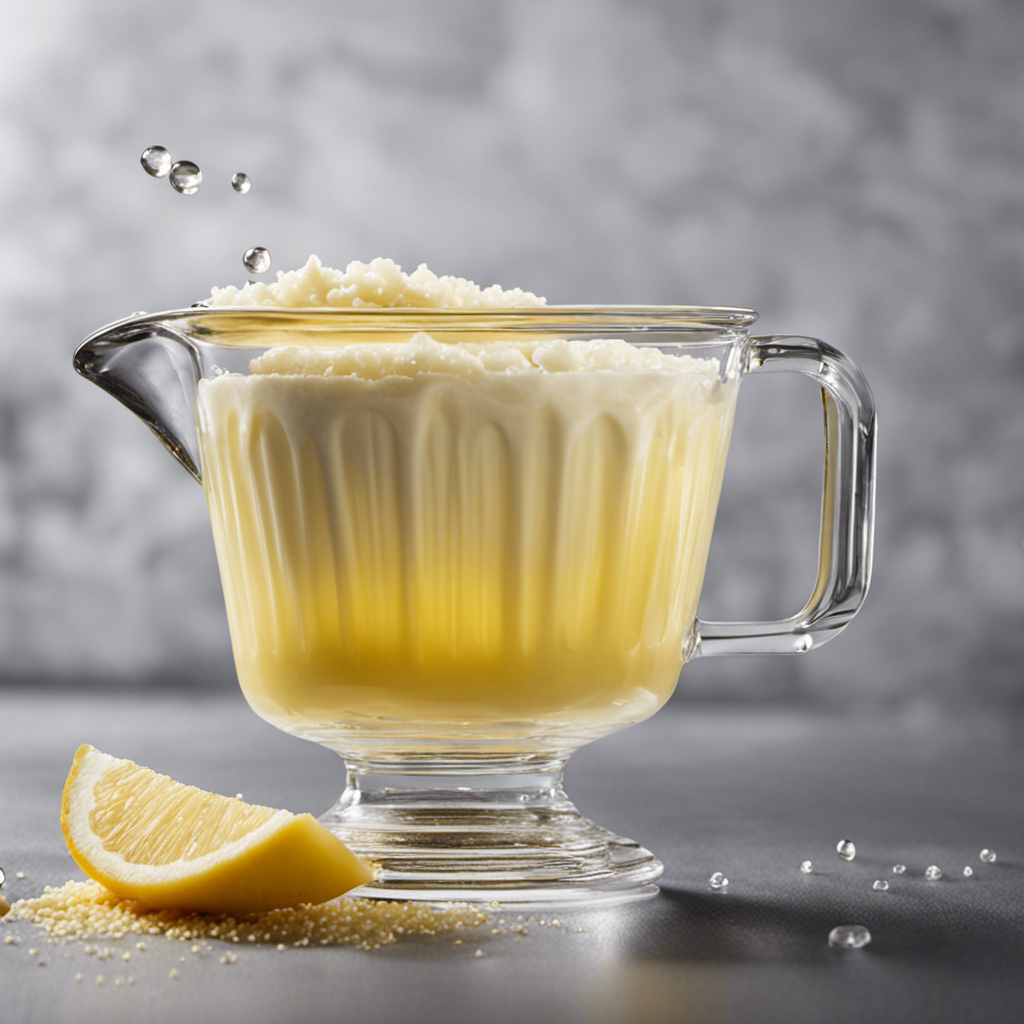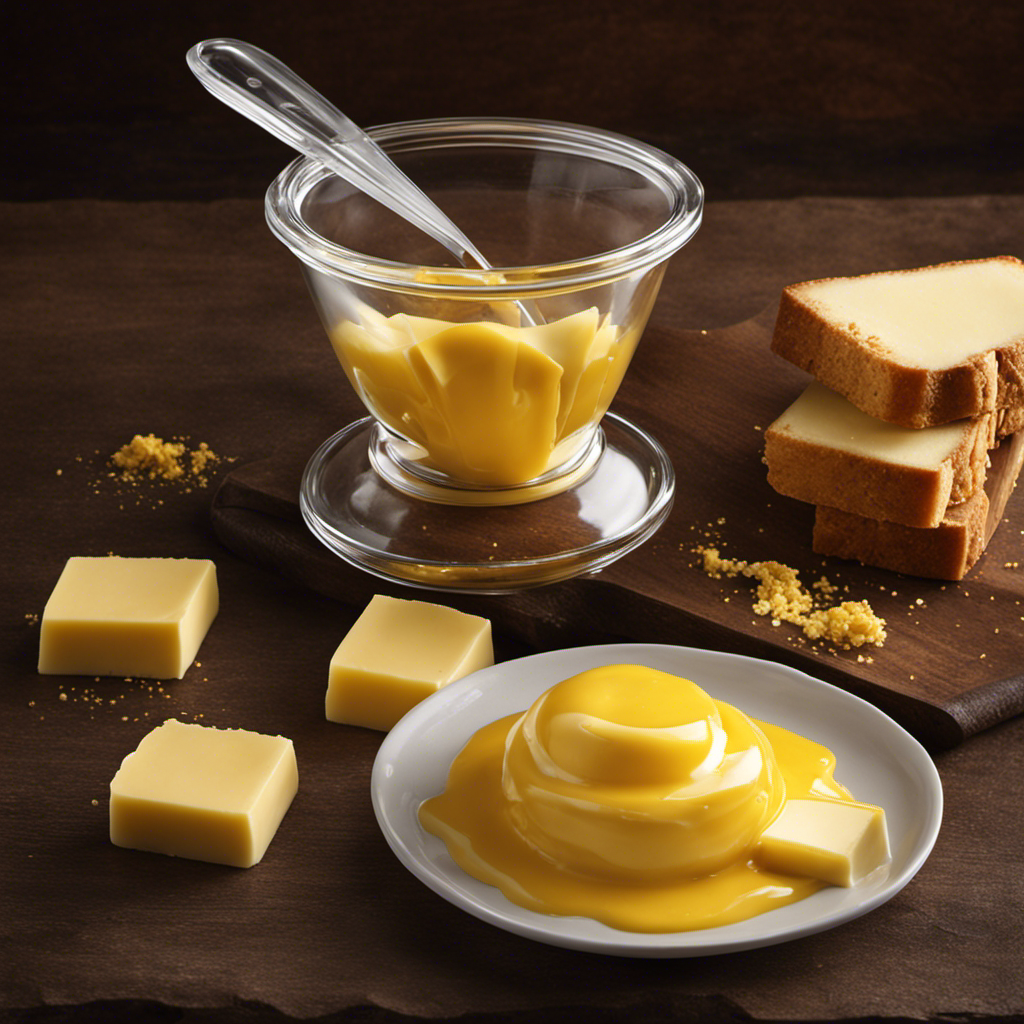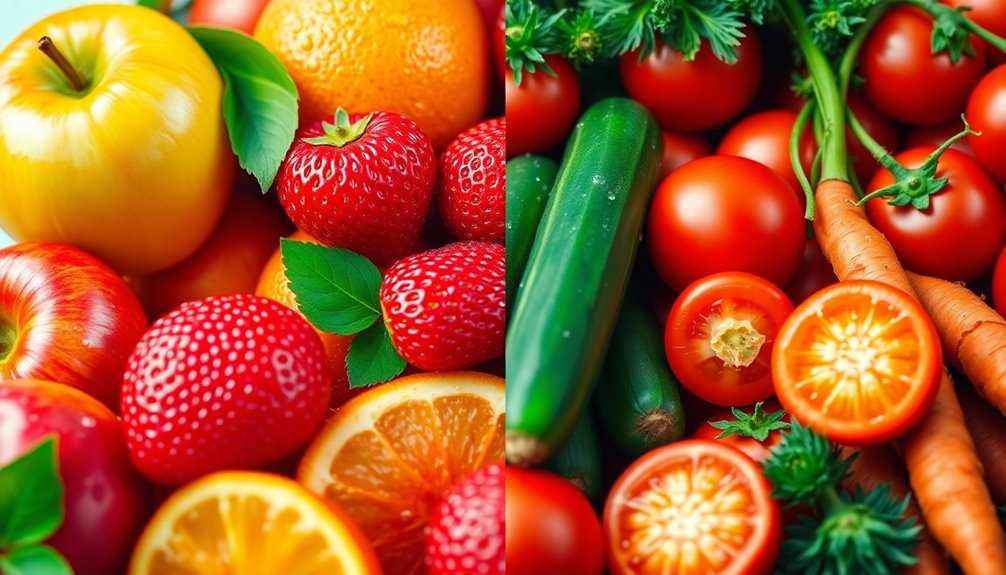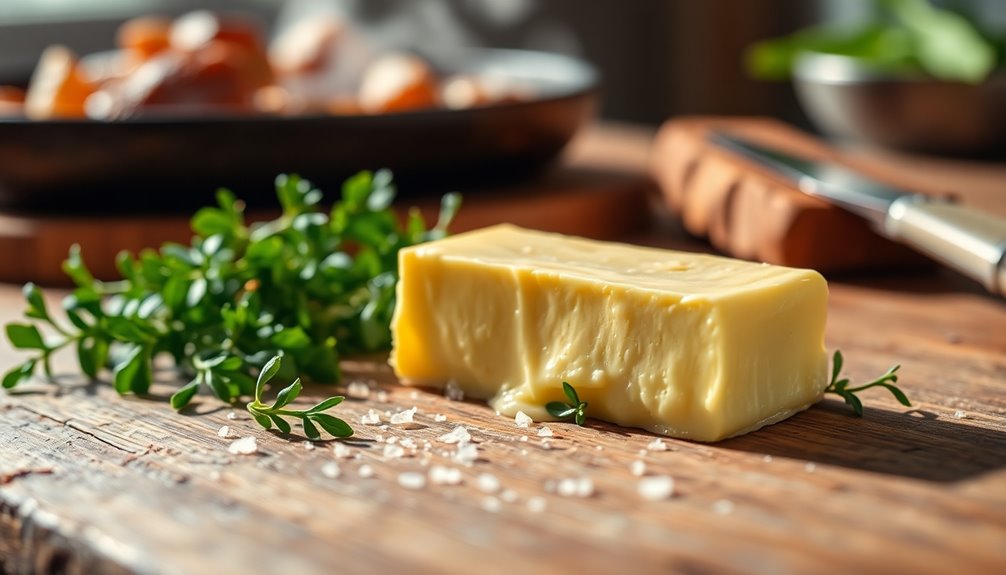Are you interested in treating yourself to the luxurious pleasure of poached lobster tails in butter? Look no more – I am here to demonstrate exactly how to create this delightful dish.
In this article, I’ll guide you through the process of choosing the perfect lobster tails, preparing the poaching butter, and expertly poaching the lobster tails to perfection. With a few tips and tricks along the way, you’ll be serving up a truly exquisite meal that will impress even the most discerning of palates.
Let’s get started!
Key Takeaways
- Choosing fresh lobster tails with a vibrant red color ensures the best taste and texture.
- Poaching lobster tails in butter helps retain the delicate flavor and tender texture.
- Melt the butter in a saucepan at the correct temperature (130°F to 140°F) to create a perfect poaching environment.
- Consider personal preference and health considerations when choosing between butter and oil for poaching lobster tails.
Choosing the Perfect Lobster Tails
When choosing the perfect lobster tails, it’s important to look for ones that are fresh and have a vibrant color. Fresh lobster tails ensure the best taste and texture when preparing various lobster recipes. The color of the lobster tail should be a rich and vibrant shade of red, indicating its freshness.
To select the best cooking method for your lobster tails, consider your preference and the desired outcome. Poaching lobster tails in butter is an excellent choice as it helps to retain the delicate flavor and tender texture of the meat.
Now that you know the importance of choosing fresh lobster tails and the benefits of poaching them in butter, let’s move on to the next step: preparing the poaching butter.
Preparing the Poaching Butter
To prepare the butter for poaching, you’ll need to melt it in a saucepan. It is important to ensure that the butter is at the correct temperature for poaching, which is typically around 130°F to 140°F. This temperature range allows the lobster tails to cook gently and evenly without becoming overcooked or rubbery.
To achieve this, you can use the butter infusion method. Start by melting the butter over low heat in a saucepan, making sure not to let it brown or burn. Once melted, remove the saucepan from the heat and let it cool slightly before adding the lobster tails. This will help to maintain the desired temperature and ensure a perfect poaching environment for the lobster tails.
Prepping the Lobster Tails for Poaching
When it comes to prepping lobster tails for poaching, two key points to consider are the shell removal technique and the optimal cooking time.
The shell removal technique is crucial in ensuring that the lobster tails are properly cleaned and ready for cooking.
Additionally, knowing the optimal cooking time is essential to achieving a perfectly cooked and tender lobster tail.
Shell Removal Technique
The first step in removing the shell is gently pulling on the tail to separate it from the body. This allows for easier access to the meat inside. Once the tail is detached, I use a sharp knife to make a lengthwise incision along the top of the shell. Taking care not to cut into the meat, I then carefully lift the shell away from the meat, exposing the succulent lobster flesh.
This shell removal technique ensures that the meat remains intact and pristine, ready for poaching in butter. While poaching is a classic and delicious cooking method for lobster tails, there are alternative cooking methods such as grilling or broiling that can also produce mouthwatering results. It all comes down to personal preference and the desired flavor profile.
Optimal Cooking Time
For the perfect texture and flavor, you’ll want to cook your lobster tails just until they turn opaque and firm. Cooking lobster tails requires precise timing and techniques to achieve the best results. Here’s how to cook them to perfection:
- Start by bringing a large pot of salted water to a boil.
- Gently place the lobster tails into the boiling water and cook for about 1-2 minutes per ounce of tail.
- Keep an eye on the tails and remove them from the water as soon as they turn a beautiful opaque white color and feel firm to the touch.
- To ensure even cooking, you can also cut a small slit in the top of the tail before boiling.
By cooking the lobster tails until they are just opaque and firm, you will preserve their natural sweetness and succulent texture.
Now that we know the optimal cooking time, let’s move on to the next step: poaching the lobster tails in butter.
Poaching the Lobster Tails
First, you’ll need to prepare the poaching liquid for the lobster tails. This will infuse them with a delicate flavor and keep them moist during the cooking process. I recommend using a combination of butter, white wine, and aromatics such as garlic, shallots, and thyme. Here’s a simple recipe to follow:
| Ingredients | Measurements |
|---|---|
| Butter | 1 cup |
| White wine | 1/2 cup |
| Garlic | 3 cloves, minced |
| Shallots | 2, finely chopped |
| Thyme | 2 sprigs |
To make the poaching liquid, melt the butter in a saucepan over medium heat. Add the garlic, shallots, and thyme, and cook until fragrant, about 2 minutes. Pour in the white wine and bring the mixture to a simmer. Allow it to reduce slightly, then remove from heat and let it cool. This flavorful liquid will enhance the taste of the lobster tails and make them succulent and buttery.
Serving and Garnishing the Poached Lobster Tails
To serve and garnish your poached lobster tails, you can sprinkle them with freshly chopped parsley for a pop of color and a burst of freshness.
Here are three garnishing techniques and flavor variations to enhance your dish:
-
Drizzle melted butter over the poached lobster tails to add richness and enhance the buttery flavor.
-
For a citrusy twist, squeeze fresh lemon juice over the lobster tails to bring out their natural sweetness and brighten the dish.
-
To add a touch of elegance, top the lobster tails with a dollop of homemade hollandaise sauce. The creamy, tangy sauce complements the tender lobster meat perfectly.
These garnishing techniques not only elevate the visual appeal of the dish but also enhance the flavors, creating a delightful dining experience.
Experiment with different combinations to find your favorite flavor profile.
Tips and Tricks for Perfectly Poached Lobster Tails
I’ve learned a lot about cooking lobster tails, and now I want to share some tips and tricks for achieving perfectly poached lobster tails.
One of the key factors to consider is the cooking time and temperature, as this will greatly affect the texture and doneness of the lobster meat.
Additionally, the choice between using butter or oil can also impact the flavor and richness of the dish.
Cooking Time and Temperature
The ideal cooking time and temperature for poaching lobster tails in butter is 3-4 minutes on medium heat. This cooking technique ensures that the lobster meat remains tender and succulent, while the butter infuses it with a rich and luxurious flavor.
To achieve the perfect poached lobster tails, follow these tips:
- Use a large saucepan or skillet with a lid to poach the lobster tails.
- Melt the butter over medium heat until it starts to bubble gently.
- Place the lobster tails in the pan, ensuring they are fully submerged in the butter.
- Cover the pan with the lid and cook for 3-4 minutes, until the lobster meat is opaque and firm.
- Remove the lobster tails from the pan and serve immediately.
Butter Vs. Oil
Now that we have discussed the cooking time and temperature for poaching lobster tails, let’s move on to the topic of butter versus oil.
Many people are often torn between using butter or oil for cooking, and this decision can greatly impact the flavor and health benefits of your dish.
Butter, with its rich and creamy flavor, can add a luxurious touch to your lobster tails. It enhances the natural sweetness of the meat and gives it a satisfying richness. However, it is important to note that butter is high in saturated fats, which can be detrimental to our health if consumed in excess.
On the other hand, oil is a healthier alternative as it contains unsaturated fats which are beneficial for our cardiovascular health. However, it may lack the distinctive butter flavor that many people enjoy.
Ultimately, the choice between butter and oil comes down to personal preference and health considerations. If you want to indulge in the decadent butter flavor, it is recommended to use it in moderation and balance it with other healthy ingredients in your meal.
Frequently Asked Questions
How Long Can I Keep the Poached Lobster Tails in the Refrigerator Before Serving?
It is safe to eat poached lobster tails that have been refrigerated for more than 24 hours. However, it is recommended to consume them within 2-3 days to ensure freshness and optimal taste.
Can I Use Frozen Lobster Tails for This Recipe?
Yes, you can use frozen lobster tails for this recipe. If you don’t have access to fresh lobster, frozen tails are a convenient alternative. There are also other methods of cooking lobster tails besides poaching in butter.
What Is the Best Type of Butter to Use for Poaching Lobster Tails?
The best type of butter to use for poaching lobster tails is clarified butter. It adds a rich, buttery flavor and enhances the natural sweetness of the lobster. Alternatives like ghee or olive oil can also be used. Adding herbs and spices can further enhance the flavor.
Can I Add Any Additional Seasonings or Flavors to the Poaching Butter?
Adding additional seasonings or flavors to the poaching butter can enhance the taste of lobster tails. However, it is important to choose seasonings that complement the delicate flavor of the lobster. Experimenting with different herbs and spices can elevate the dish.
Can I Use This Poaching Method for Other Types of Seafood, Such as Shrimp or Scallops?
Using the same poaching method for other seafood like shrimp or scallops has its pros and cons. Shrimp may cook faster, while scallops can be delicate. Adjust cooking times accordingly and experiment with different flavors to enhance the dish.
Conclusion
In conclusion, poaching lobster tails in butter is a decadent and delicious way to elevate your seafood dining experience. The tender and succulent meat of the lobster contrasts perfectly with the richness of the butter, creating a harmonious balance of flavors.
By following the steps outlined in this article, you can confidently prepare this gourmet dish at home.
So, why not treat yourself and your loved ones to a luxurious meal filled with the tantalizing aroma and melt-in-your-mouth goodness of poached lobster tails in butter?
